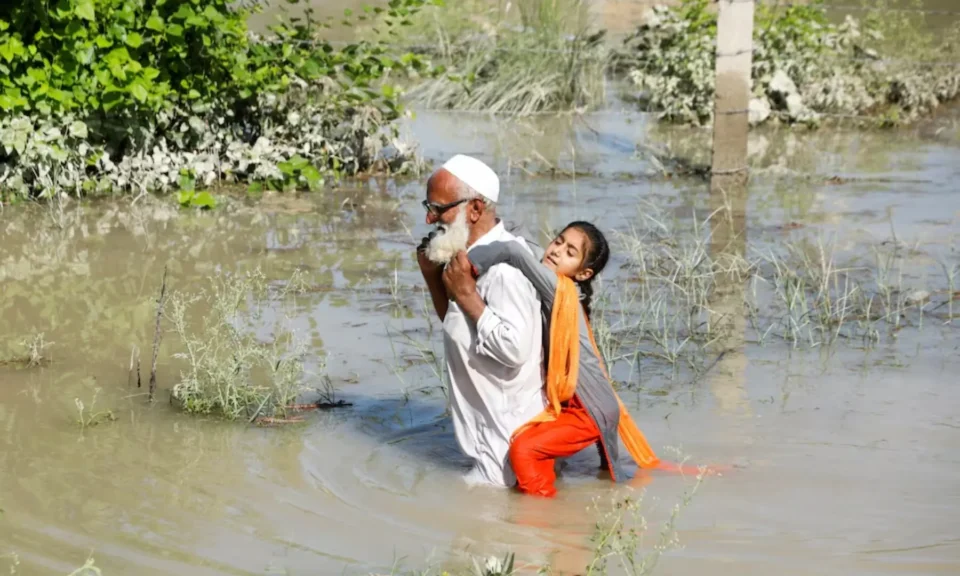Climate Change and Urban Migration: The Struggle of Displaced Families in Karachi
By Nausheen H. Anwar, Soha Macktoom, Muhammed Toheed & Adam Abdullah | September 1, 2025
Floods and extreme weather events have forced thousands of families to leave their homes in rural Pakistan and seek refuge in cities like Karachi. For residents of Tent City in Hawkesbay, surviving is a daily struggle. Homes made from bamboo, fabric, and scraps provide only minimal protection, leaving displaced people exposed to heat, poor sanitation, and limited healthcare.
Pakistan ranks among the most vulnerable countries to climate change, with over 24 million internal displacements recorded between 2009 and 2023, mostly due to floods. The 2010 and 2022 deluges triggered mass migrations, adding pressure to already crowded urban centers with populations exceeding 25 million.
Displaced families face multiple challenges: overcrowded settlements, lack of clean water and sanitation, insecure housing, and strained public services. Children often miss out on school, women are exposed to extreme heat while caring for households, and families struggle with poverty and limited job opportunities. Many are forced into low-wage or informal work to survive.
In Sindhabad, an informal settlement along the Karachi-Hyderabad Highway, more than 150,000 people live in makeshift shelters. Essential services like healthcare, education, and clean water are often far away, sometimes leading to tragic accidents.
Experts emphasize the need for robust data, inclusive urban planning, and climate-resilient infrastructure. Policy recommendations include:
-
Developing a national legal framework for climate-induced displacement.
-
Strengthening urban planning with climate adaptation measures and inclusive zoning.
-
Investing in resilient housing and essential services in informal settlements.
-
Improving data collection and registration of displaced populations.
-
Empowering local governments to manage integration and allocate resources transparently.
-
Incorporating migration into disaster risk reduction and climate strategies.
As climate disasters become more frequent, Pakistan’s cities must prepare for the long-term challenges of internal displacement, ensuring safety, services, and opportunities for the millions affected.

